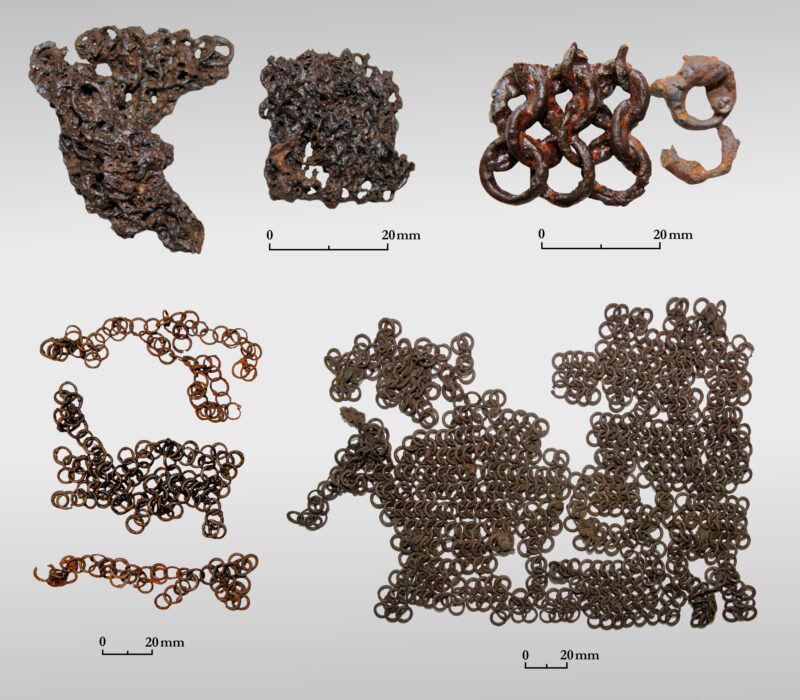A remarkable discovery near the Roman legionary fortress of Bonn, Germany, has uncovered a 14 kg hoard of Roman mail armour, offering new insights into the logistics of recycling and repair along Rome’s northern frontier. Found in the extramural settlement next to the legionary fortress, this large collection highlights the role of local craftworkers in maintaining the Roman military’s equipment. The research behind this find has just been published in Antiquity, a leading archaeological journal.

The hoard was found during excavations by the LVR-Amt für Bodendenkmalpflege im Rheinland in 2012. It consists of two nearly complete mail garments and parts of two others, all corroded into a single mass. Since mail is made of small, interconnected rings that cannot be melted down, the recycling of such armour was different from most metal objects. Rather than repurposing the metal, mail garments were recycled by using them as ‘donors’ to patch others, similar to how textiles are mended in antiquity. The Bonn hoard likely constitutes a stockpile of material intended to be used for the repair of mail armour. “This is the first clear evidence that mail armour was being repaired outside a Roman military installation,” said Martijn A. Wijnhoven, one of the researchers. This find underscores the connection between Roman forts and surrounding civilian settlements, where skilled workers repurposed military materials.
The stockpile was probably deposited during the mid-3rd century AD, when the extramural settlement was systematically dismantled and cleared, similar to what has been documented at military sites across the Roman Empire. During the abandonment, decisions had to be made about what materials to take or leave, largely dictated by transport limitations. As was common in the clearance of Roman military installations, scrap metal that couldn’t be taken was often buried in ditches, pits, or wells to prevent it from falling into enemy hands. The mail armour from the Bonn hoard held economic value as long as there was a demand for repairing other mail garments. However, with the Roman army withdrawing from the fortress around the same time, the stockpile would have lost its purpose, leading to its burial.
The research on the hoard required the expertise from various fields of study. This led to the international collaboration of three institutes: the LVR-Amt für Bodendenkmalpflege im Rheinland (Claudia Koppmann) and the LVR-LandesMuseum Bonn in Germany (Holger Becker), and the Institute of Archaeology of the Czech Academy of Sciences, Brno in Czechia (Martijn A. Wijnhoven). In addition to visual examination, the team used high-resolution computed tomography (CT) scans. “X-ray technology allows us to see what cannot be seen with the naked eye. To look inside the solid mass of a Roman armour, only CT scans provided satisfactory results,” says Holger Beckers.
To underline the importance of the hoard, Claudia Koppmann emphasises: “The find adds to a growing corpus of mail armour from a variety of different contexts across the Roman world, and beyond the frontiers, and contributes to understanding of the complexity of economic and military organisation of ancient armies.”
Research article:
Recycling and repair on the Roman frontier: a hoard of mail armour from Bonn
Authors:
Martijn A. Wijnhoven
Claudia Koppmann
Holger Becker




